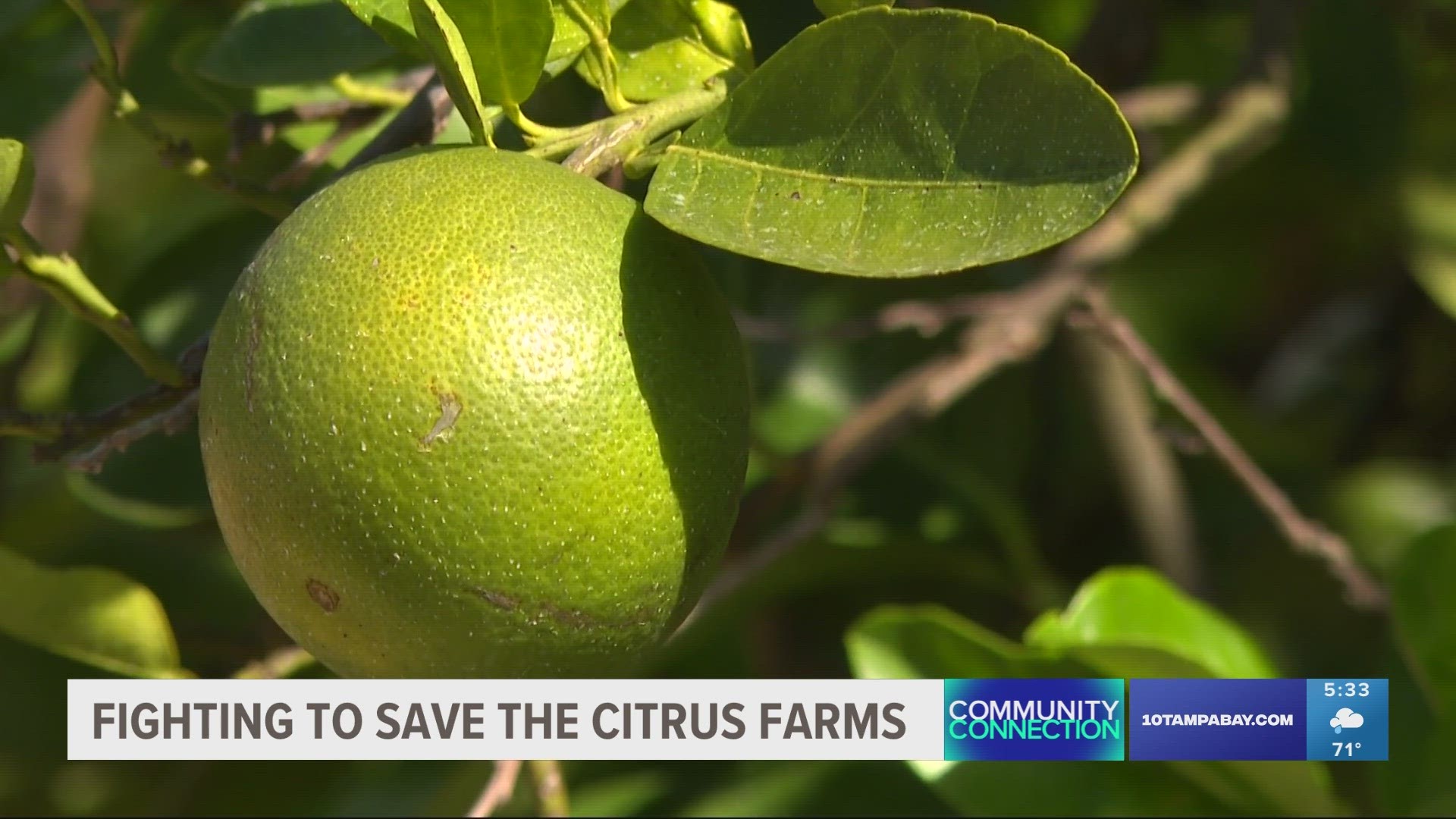LAKE WALES, Fla. — With a name like Kyle Story, he’s bound to have all sorts of tales.
His tale begins in the 1930s when his family first planted citrus. It would eventually bloom into the thousands of acres of Florida citrus, peaches, blueberries, and various crops, which Story helps run across Central and South Florida today.
“We’re blessed,” Story, vice president of The Story Companies, said.
Four generations later, Story has seen ups and downs within the industry. Among the current challenges impacting the industry are development and changes in consumer habits, Hurricane Irma in 2017, along with Hurricanes Ian and Nicole in 2022 and a recent freeze.
Perhaps, none is more infamous than citrus greening, a disease spread by an insect and threatening the livelihoods of growers. It was first detected in Florida in 2005, but the problem persists statewide and around the world.
There is still no known cure, but recently, new and promising therapies have emerged.
“We're resilient and our commitment is shining right now,” Story said.
Walking around one of Story’s groves in Lake Wales, Story showed 10 Tampa Bay a sample of new therapies he’s trying, which includes a method to make trees more tolerant to the disease. He’s expecting to produce twice as many boxes of oranges in the upcoming season than last.
At its peak, Florida was producing more than 300 million boxes, according to Matt Joyner, the CEO of Florida Citrus Mutual.
“We finished last season at about 18 million boxes, so about a 90% decline,” Joyner said.
The 2022-2023 season production made it one of the worst since World War II.
This upcoming season, 20.5 million boxes of oranges are forecasted, according to the U.S. Department of Agriculture. However, that’s still about half of what was produced two years ago, and prices are at an all-time high.
“While that's still a very small harvest, we think it reflects some of what we're seeing out there,” Joyner said. “Even given where we're at as an industry, there's some real optimism that we finally have some tools to start rebuilding and moving forward.”
The new therapies, for instance, are aimed to make rootstocks and trees more tolerant to the disease. Protective covers have also been used to prevent the spread of the disease.
Encouragement for more research has fueled possible treatments and hopefully a cure someday. The University of Florida was awarded $16 million to advance its research last year.
With more production, growers are hoping they can continue to market juice to more consumers. For instance, the COVID-19 pandemic actually helped the industry.
Demand for orange juice went up as more people saw its benefits, but the need is still there for Florida to grow those orange groves back.
While land development, especially with the influx of new residents, has also led to the loss of acreage, Joyner said in many instances, growers use that to cashflow additional acreage in more rural areas where there’s not as much development pressure.
“There will always be a Florida citrus industry. You just can't replicate what we can do producing some of the best orange juice, not only in the country, but I would argue in the world,” Joyner said.
With breakthroughs being made in therapies, those in the industry hope progress will only accelerate from here.
Story believes the ongoing challenges only drive those still in the business to elevate it. He draws motivation from previous challenges his family overcame, including the 1989 December freeze.
“We see a commitment from the growers today that's unparalleled,” Story said. “Those of us, like our family who are blessed to be able to continue, are going to make sure that we see this to the end and hopefully that's another generation or more.”

